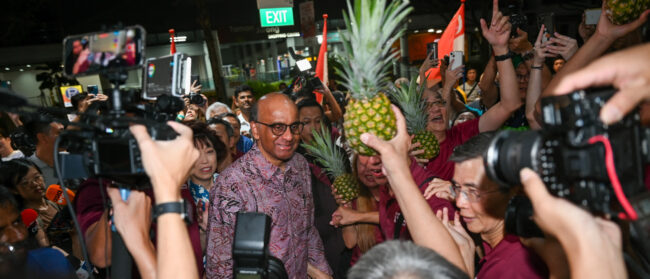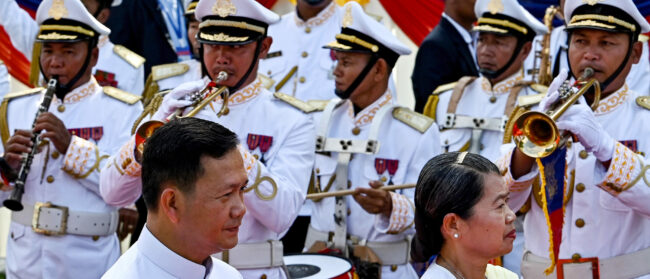Editor’s note: Almost 50 years on from Philippine President Ferdinand Marcos’ declaration of martial law, the legacy of the autocratic ruler continues to divide the Philippines. Over the weekend, the presidential palace declared martial law “a tool to save the exercise of democracy” – a boon to current leader Rodrigo Duterte, whose imposition of martial law across the nation’s south continues to this day. Today, thanks to Duterte, Marcos rests in the Philippines’ Heroes’ Cemetery, his body moved from a garish mausoleum in his hometown. Four years ago, Southeast Asia Globe travelled to Marcos’ birthplace to witness the dead ruler’s growing cult of personality firsthand.
Outside of the Marcos Museum and Mausoleum, beneath a soaring verdant canopy, skinny pushbike tricycle drivers listlessly chatter away the day. They are more consumed by their conversation than finding customers: exiting visitors of the museum making their way to Marcos Avenue, carrying with them weighty opinions.
In a way, the drivers are like sentinels here, locals that witness the day in and day out routine of people coming to the lonely northern Philippine town of Batac to do one of two very different things – jeer or praise Ferdinand Marcos. Such is the divisive nature of the former Philippine president’s legacy that people either love him or hate him.
To the Filipinos of Ilocos Norte, in particular, Marcos’ 21-year reign represents the Golden Age of their kin, a time when the cradle of the country’s power was centred here. For them, Marcos is the best president the Philippines has ever had. Within the walls of the museum, once Marcos’ childhood home, they come in droves to relive those days and breathe in pride for the man that put their province on the map. By and large, there is a circus atmosphere – throngs of noisy visitors are lined up waiting to get in, while their children romp around bumping into people’s legs. When the moment strikes, selfies are taken in awkward abundance.
But for many others – the majority of Filipinos – the museum is worth a visit for no other reason than to peruse a potent case study in the cult of personality. To them, the historical accounts, memorabilia and documentation displayed within are half-truths and whole lies. Even the feature attraction, an eerie mausoleum holding Marcos’ body in state, is apocryphal. According to urban legend, the body is a fake, a wax figure poetically put on display in a final ruse pulled by the great puppet master over his unwitting populace.
Make no mistake about it: this is Marcos territory. And many of the patrons of this museum treat it as hollowed ground. I had barely entered the building when a fellow visitor offered their unsolicited adoration of the former Philippine president: “Marcos is the best!” he shouted on his way out.
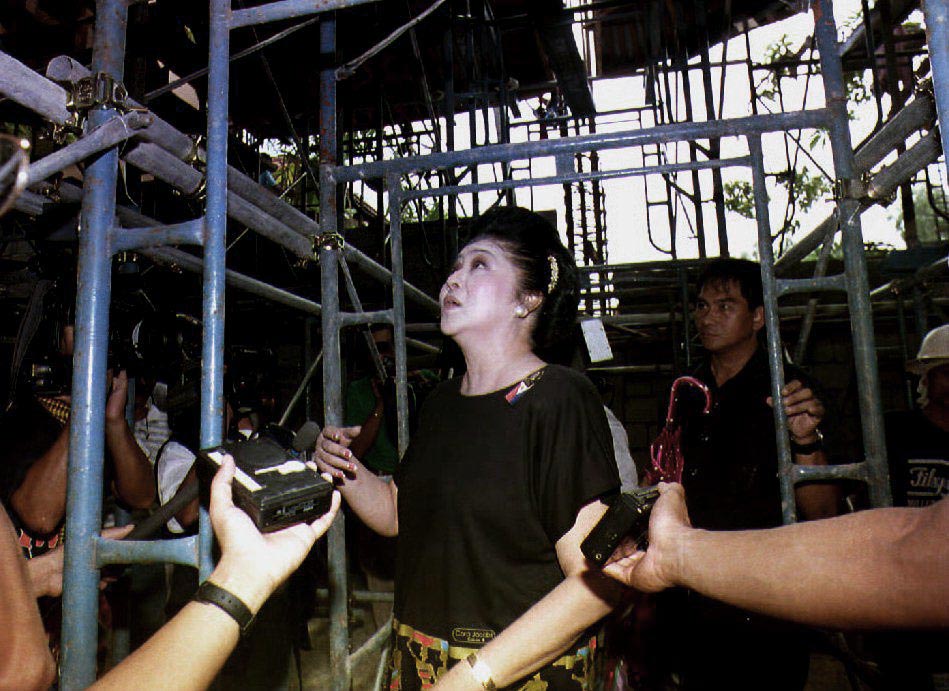
Inculcating a positively spun outlook is the museum’s objective, so perhaps such uncontainable enthusiasm is to be expected. Visitors are guided through the museum via written passages by none other than Imelda Marcos, the late Ferdinand’s wife and infamous lover of an unearthly diversity of shoes and glittery things.
The first passage, just atop the staircase, sets the tone of the curator’s particular vision of Marcos.
“Student Years – Beginnings of an Achiever,” goes the title of the first panel, followed by: “His childhood experiences, no matter how trivial or vague, moulded the young Andy to become the man who significantly etched a place in our nation’s history… However, there is a great amount of humanity in his achievement. Like basi, the Ilocano wine, Ferdinand’s childhood lessons were fermented over time, and upon reaching full maturity, yielded an impeccable taste.”
All of this is, of course, spurious garbage to the rest of the Philippines and, indeed, the outside world; inescapable are the facts that define the Marcos regime. He was a man that retained power via militaristic authoritarianism and trumpeted nationalistic purpose only to serve a personal populist agenda. According to the Akbayan party, the political entity that threw Marcos out of power, the Philippine dictator oversaw an administration that was responsible for 35,000 torture cases, 70,000 incarcerations and 3,257 murders.
However, according to the University of Wisconsin’s Alfred McCoy, widely regarded as one of the world’s leading Southeast Asia historians, those stats are only scratching the surface. “Actually, the situation was worse than Akbayan depicts,” he explains. “Not only were the metrics of human rights abuse and economic decline bad by 1986 when Marcos was driven from power, but the country was demoralised and divided, with a communist insurgency… and military coup plotters, mobilised by his politicisation of the officer corps, pounding at the gates of power.”
What had begun as an enviably strong trajectory – boosted by legacy infrastructure from the US – deteriorated due to poor economic management. “The initial years of Marcos saw some robust economic growth,” says Richard Javad Heydarian, assistant professor of political science at De La Salle University in Manila. “But progressively the country’s major economic indicators went into disarray, from hyperinflation and ballooning debt to an almost total economic collapse by the early 1980s. So clearly the economic model was unsustainable.”
By the time Marcos was ousted into exile by the non-violent People Power revolution of 1986, the country’s national debt had swelled from $355m, registered at the start of his presidency, to $28.3 billion, and hundreds of billions of dollars of funds are believed to have disappeared overseas.
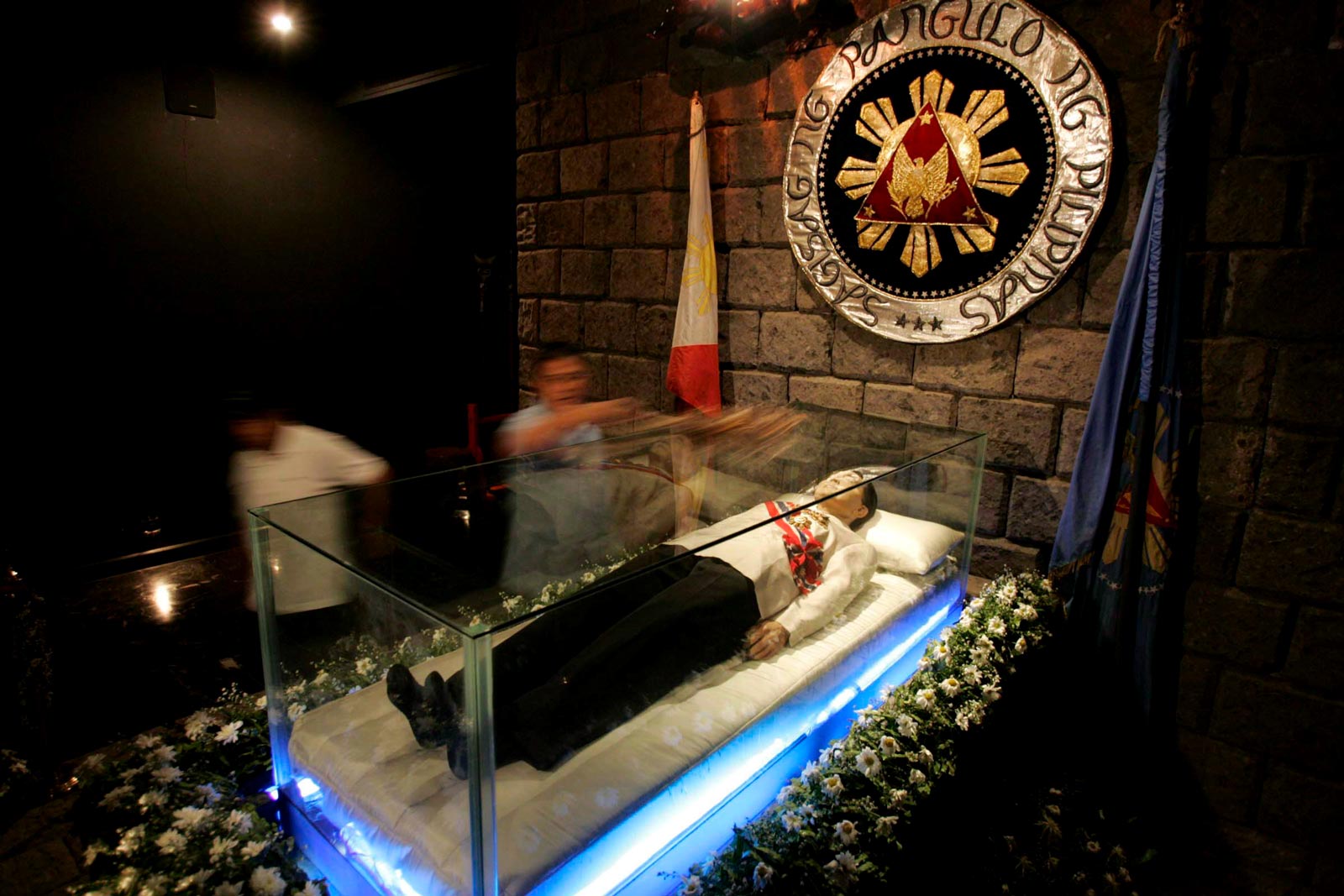
Unsurprisingly, none of this is mentioned in the museum. But there are other omissions that, if included, could have brought the ruler’s legacy to life. As his decade of imposed martial law from 1972 until 1981 suggests, he was a passionate supporter of the military, and he is credited with firing the first Philippine-made missile. During his rule he built thousands of kilometres of roads, established energy infrastructure and implemented an agricultural policy that made the Philippines self-sufficient in terms of rice and other core commodities. Today, the country is actually worse off in terms of food security.
Despite the numerous atrocities of his rule, many Filipinos still extoll Marcos’ legacy due to his achievements and, in some cases, thanks to a phenomenon known as ‘autocratic nostalgia’, which is also common in other post-revolution countries such as Indonesia and Egypt.
Many people continue to believe in Marcos because of the failures of his successors, who are yet to resolve double-digit underemployment and poverty in the country. So the nostalgia… is more based on frustrations with current leaders.
Richard Javad Heydarian
However, the museum’s curators tend to stick to a script that promotes the “charismatic authority” of the Marcos legacy. For an outsider, the text has a sublimely entrancing effect, forcing visitors to discern fantasy from reality by re-reading it over and over.
In a section that commemorates Marcos’ military service during World War II, visitors are shown aged newspapers and phoney money of the era to set the scene, which is expressed through this passage: “War Years – Valour of the Veteran: For every veteran, the haunting experience of World War II will forever be lodged in their memory as a bitter nightmare, but for Ferdinand pain and even death are but noble sacrifices for the motherland.”
Marcos is a medalled war veteran, yes, but the extent of his valour is questionable. He claimed that he was “the hero of the Battle of Bessang Pass” in Ilocos Sur and that he earned 33 medals and awards during his military career. However, Bonifacio Gillego, a military officer who ignored Marcos’ orders to enforce martial law, claims that at least eight of those medals were awarded later, after Marcos gained political power.
In a dramatic twist of fate, it is said that the disillusionment of key personalities in Marcos’ military eventually became an important domino in the toppling of the regime. And their disgruntlement would involve Imelda, who is a large feature of the museum.
A WikiLeaks data dump quoted a former US ambassador discussing a birthday party arranged by Imelda for her husband that ordered hundreds of troops, including military chiefs, to dress up in “garish female attire”. “Every aspect of the occasion was too much, too long and in questionable taste,” he was quoted as saying. These arrangements may well have jeopardised loyalty amongst the ranks of the ‘Omega 12’, the 12 top military officials who were behind Marcos’ martial law, so-called because of the luxury brand of timepieces Marcos gifted them.
Imelda had as much influence in her husband’s affairs after his death as she did during his life. Taking up the quintessential role of the Filipina wife writ large, she looked after their home – Manila, the capital – managing the Metropolitan Manila Development Authority that oversaw the ever-expanding city.
Imelda is a former beauty queen, and her own story, where a gallant Marcos courts her, is a key part of the lore presented at the museum. In a room that displays Imelda’s and Ferdinand’s trendsetting fashion – pastel filipinera dresses, sleek pineapple-fibre barongs – replica dried watermelon seeds are encased in glass, documenting the salty snacks that Imelda was eating when she first saw Ferdinand.
The passage on their “11-day romance” is longer than most of the others: “It was a Tuesday, April 6, 1954. Ferdinand Marcos had just critiqued the passing of an omnibus budget bill. But something more momentous was about to happen. That same evening, the Solon will finally meet his muse… When he entered he saw Imelda, it was as if he was hit by temporary paralysis… He followed Imelda when she went to Baguio… for the Lenten holiday. The cold breeze and mountain pines became witnesses to this budding romance. It was a well-orchestrated ensemble – a most opportune moment for the ‘Golden Voice of the North’ to get to know the ‘Rose of Tacloban’ better. With the audacity of a smitten man, Ferdinand presented her a marriage licence for her signature… They drove to Trinidad Valley for their civil wedding on the same day. After roughly 11 days of courtship, Imelda and Ferdinand went back to Manila as Mr and Mrs Marcos.”
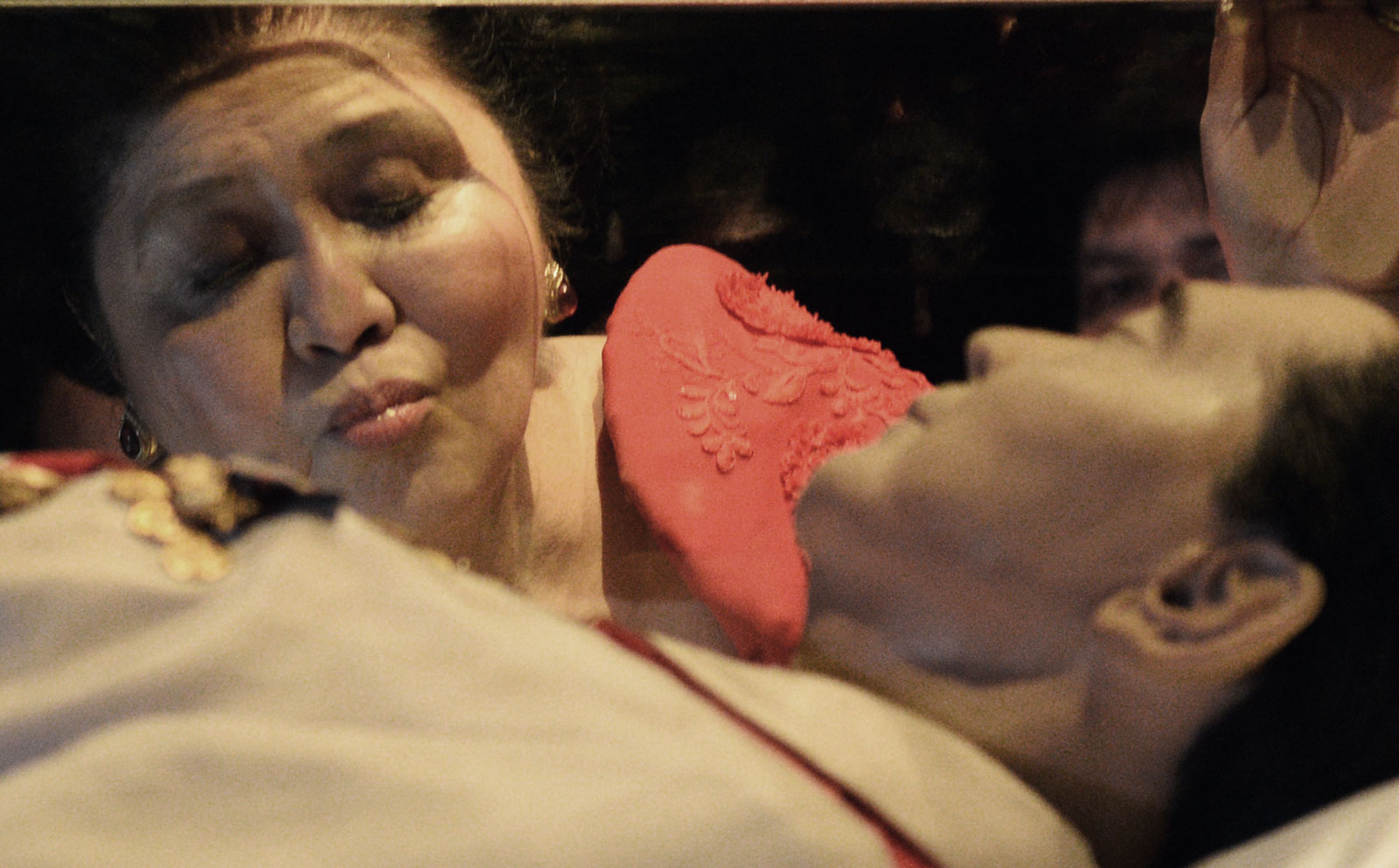
The museum exhibition ends abruptly; there is no mention of the final decade of martial law. Instead, a laminated panel next to a golden bust of Marcos opines that his legacy has had an unquestionable influence on the politics of today, and leaves it at that. That enduring influence is difficult to dispute, particularly with the Marcos clan today living on through Ferdinand ‘Bongbong’ Marcos Jr, a senator with “high-office” aspirations.
Marcos Jr may just run for vice-president in tandem with Jejomar Binay, setting the stage for an almost Shakespearean drama. Binay, a former human rights lawyer, represented victims of the Marcos administration, making for a rather awkward pairing. Even more stirring is the cast of other protagonists. Marcos Jr would be pitted against Mar Roxas II in next year’s elections, the anointed successor to incumbent President Benigno Aquino III, whose father was purportedly assassinated under orders from the late Marcos.
After exiting the museum, I catch a lethargic grin from one of the trike drivers. The man is poor but content, and there is a look in his eye that seems to say: “Yes, I know.”

